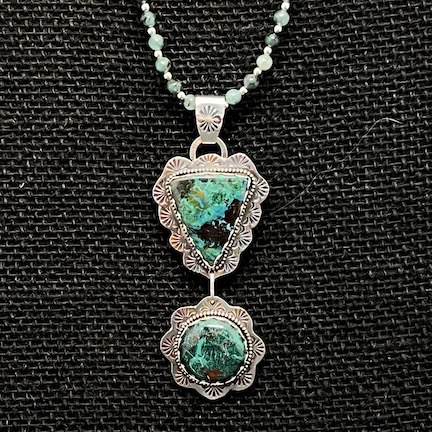I take an objective, dollars and cents look at the various ways I can sell my jewelry to see how they stack up financially.
Last weekend, I made the nearly 5-hour drive to Sequim, WA to attend a 3-day Lavender Festival that featured, among other things, artists and vendors selling their wares. I was one of those artists.

I was very pleased that this double pendant sold for $229 at the Lavender Festival, along with the $99 sterling silver and emerald necklace I’d paired it with. (Those beads were expensive!)
I’ve done plenty of art shows before. I’ve done a handful here in Washington State and a handful down in Arizona. I’ve had mixed results, mostly depending on the stage I was in in my silversmithing journey and the kind of show I was attending. Some shows are good for low-end items, other shows are good for fine art items. My work straddles those two worlds, for a variety of reasons.
But rather than talk about the evolution of my work, I want to talk about something I know well: the finance end of things. After all, I do have a BBA in Accounting with Highest Honors from Hofstra University. (LOL.) And even though I don’t use that degree in my daily work, I haven’t forgotten a lot of what I learned along the way, including marketing and finance. It is, after all, what makes it possible for me to handle the financial records and do the marketing for all of the businesses I operate, even if I can never really count how many there are.
And here’s what I learned about the various ways I sell my work.
Continue reading →

